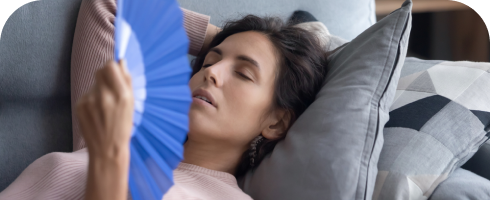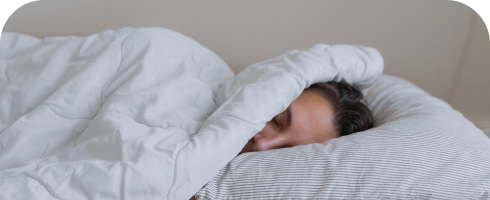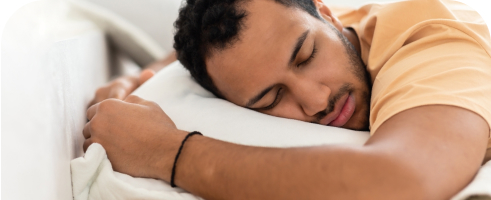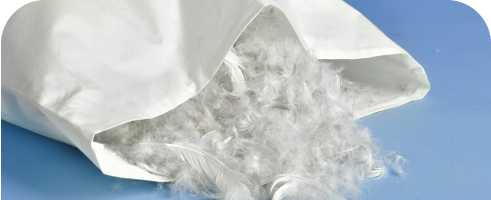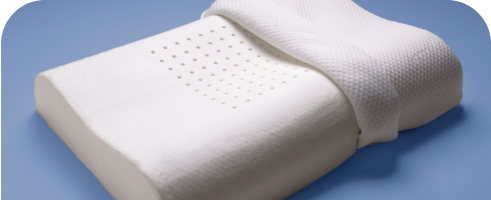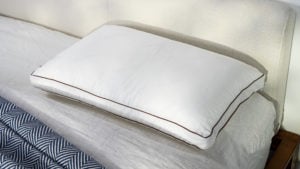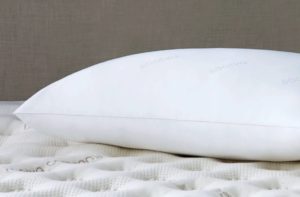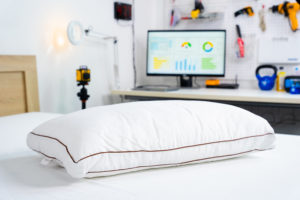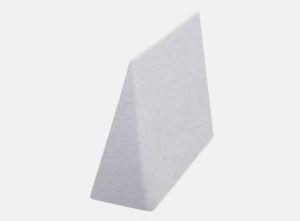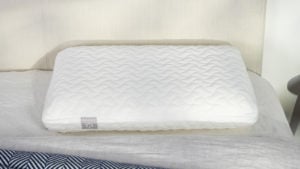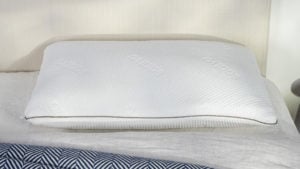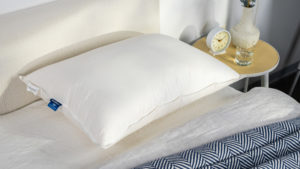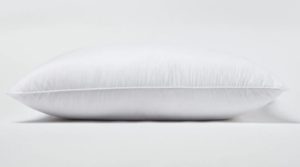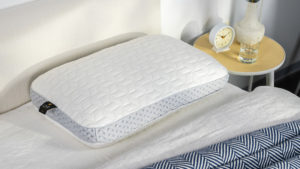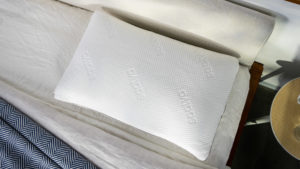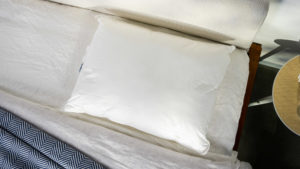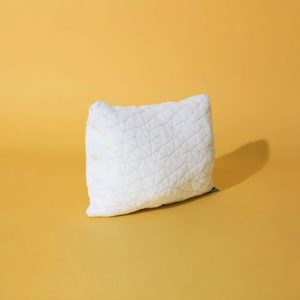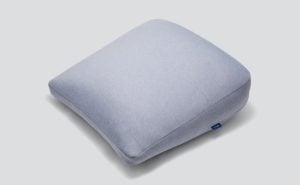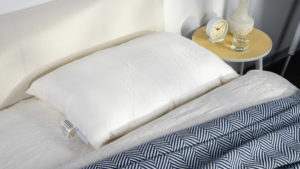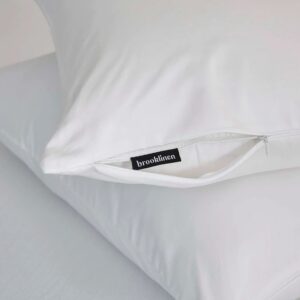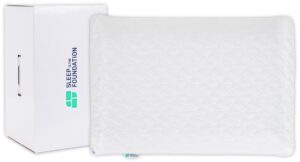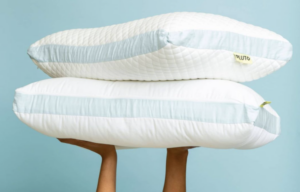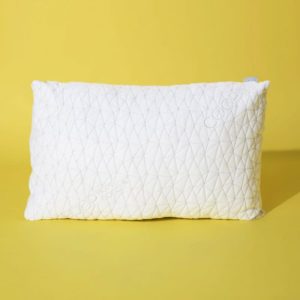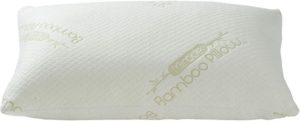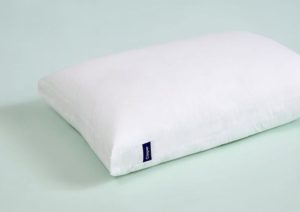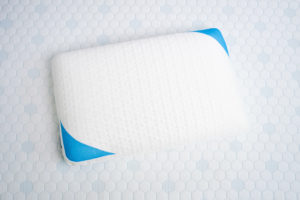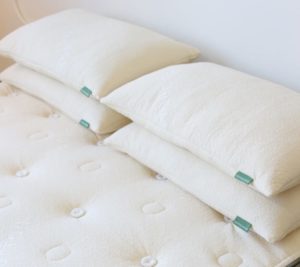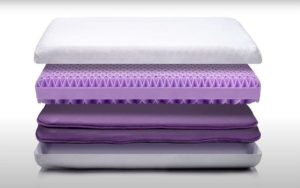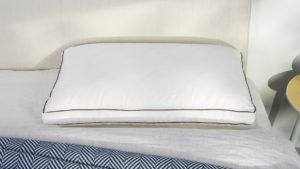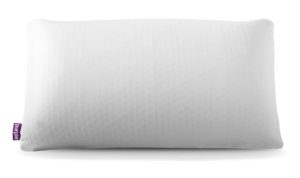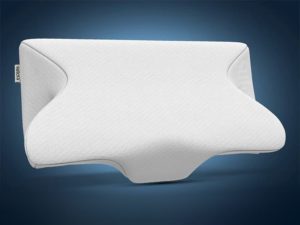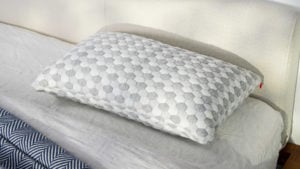How Often Should You Replace Your Pillows?
Experts agree that getting a good night’s sleep is essential for physical and mental health. One way to set yourself up for better sleep is by optimizing your bedroom environment and bedding. This includes maintaining your pillow and replacing it when necessary so it always provides you with the proper amount of support.
Because we spend so many hours in bed with our heads resting on our pillows, it is also essential to be mindful of pillow quality and cleanliness. Not regularly switching out pillows can lead to allergic reactions, breakouts, and neck pain. We’ll discuss how to care for your pillow and how to know when it’s time for a new one.
Find a Pillow That’s Right for You
Looking for a new pillow? Take the quiz below to find the perfect pillow for your needs.
Trouble sleeping?
Answer these 5 easy questions to discover your perfect pillow

Trouble sleeping?
Answer these 5 easy questions to discover your perfect pillow
What position do you sleep in?

Side

Back

Stomach
How Often Should You Replace Your Pillows?
Most experts recommend replacing pillows every 1 to 2 years. Doing so helps to ensure that you’re using pillows that are supportive, clean, and free of allergens. It is also important to care for the pillows you use to ensure their longevity.
Generally, you’ll be able to tell when it’s time to replace your pillows. If you’re waking up with a sore neck or if you’re unable to find a comfortable sleeping position, it might mean that your pillow is no longer providing the support you need. Just as with a mattress, you should replace pillows when they start sagging or developing lumps. It might also be time to look into new pillows when you notice excessive yellowing, or if your allergies are acting up at night.
Certain pillow materials are more durable than others. For example, a polyester pillow might last just 1 year, while a latex pillow might last up to 3 years. In addition to the material type, the quality of the materials or the density of the foams can also play a role. Choosing the best pillow, made with higher quality materials, generally means you’ll have to replace it less often.
Clean your pillow and pillowcase regularly to protect the pillow and improve its lifespan. You should wash your pillowcases every time you wash your sheets, and many pillows themselves can be periodically machine washed and dried.
Why it’s Important to Replace Pillows
Replacing pillows frequently may seem like a hassle, but pillows that are past their prime can contribute to allergic reactions, skin breakouts, and sore muscles.
An old pillow can accumulate allergens like dust mites, fungus, mold, and pet dander. For some people, sleeping near those allergens can cause a runny or stuffy nose, itchy skin, and irritated eyes that may impact sleep quality. Replacing your pillows frequently or investing in a pillow that is designed to be antimicrobial and breathable may help prevent pillow-related allergies.
Face and hair oils, sweat, drool, and other dirt can also seep through pillowcases and get trapped in your pillows, causing yellow stains on the surface. These substances may even clog your pores and trigger acne breakouts or rashes for people with sensitive skin. Frequently washing pillowcases and pillows with a gentle detergent can help to alleviate buildup, and replacing pillows regularly can offer a fresh start that won’t irritate skin.
Perhaps most importantly, pillows are meant to support your neck and head as you sleep, relieving muscle tension and promoting healthy spinal alignment. A pillow that has sagged or flattened over time won’t provide the necessary support, and you might wake up feeling sore or unrefreshed. Side sleepers may also experience sore shoulders from a flattened pillow. If your pillow is not offering the support that it once did, it might be time to replace it. Fluffing or folding it can only get you so far.
“Side sleepers tend to need a high-loft pillow for support and to fill the space beneath the head and neck to promote proper spinal alignment. Keep your head and neck in alignment at around 30 degrees with the help of a good pillow so your airway stays open during the night, allowing air to flow from your nose to your lungs without obstruction.”
– Sarah Silverman, Psy.D., a licensed psychologist and holistic sleep wellness consultant who treats patients in New York and Florida.
Pillow Care and Replacement Guidelines
Prolonging the lifespan of a pillow requires regular care and cleaning. A pillow’s materials can influence care instructions and longevity, so it is important to pay attention to the type of pillow you buy and follow the manufacturer’s care instructions.
| Pillow Type | Care Guidelines |
|---|---|
| Memory Foam | A memory foam pillow should not be placed in a washing machine or dryer. Instead, it is best to spot clean this pillow when necessary. You can thoroughly hand wash the pillow every 2 months with a gentle detergent and let it air dry. Memory foam pillows should be replaced every 2 to 3 years. |
| Polyfoam | As with memory foam pillows, polyfoam pillows can be spot cleaned when needed and hand washed in a gentle detergent every 2 to 3 months, then air dried. Polyfoam pillows tend to last 2 to 3 years before needing to be replaced. |
| Down/Feather | Many down and feather pillows can be machine washed, but some should be dry cleaned. When machine washing a down or feather pillow, use the gentle cycle, warm water, and a mild detergent. Sometimes it might be necessary to run the rinse cycle more than once to remove all the detergent. You can air dry the pillows or place them in a dryer on a low setting for about 20 minutes. Wash these pillows every 3 to 6 months, and replace them every 1 to 3 years. You can tell it’s time for a replacement if the pillow doesn’t spring back to its normal shape after you fold it in half. |
| Polyester and Down Alternative | Down alternative and polyester pillows can be machine washed on the gentle cycle with mild detergent and cold water, and dried in a dryer on a low setting. Wash these pillows every 3 to 6 months. Down alternative pillows tend to last approximately 1 to 2 years. Polyester pillows are among the least durable and should be replaced every 6 months to 2 years. |
| Latex | Avoid washing latex pillows in a washing machine. You can spot clean stains and hand wash the pillow with warm water and a mild detergent every 2 to 3 months. Don’t submerge the pillow in water or wring it dry. Instead, lay the pillow flat to air out. You should replace your latex pillow every 2 to 4 years. |
| Buckwheat | Moisture can ruin buckwheat pillows, so it’s best to protect your buckwheat pillow with a removable, washable cover. Most buckwheat pillows can be opened up, allowing you to dry the buckwheat hulls in the sun in case of an accidental spill. You can also rejuvenate your pillow by replacing the buckwheat hulls once they start to flatten out, about once every 3 years. |
| Pillowcases | Wash your pillowcases at least once a week. Different materials have different care instructions, so check the manufacturer’s label for guidance. Replace pillowcases every 1 to 2 years. |

Still have questions? Ask our community!
Join our Sleep Care Community — a trusted hub of sleep health professionals, product specialists, and people just like you. Whether you need expert sleep advice for your insomnia or you’re searching for the perfect mattress, we’ve got you covered. Get personalized guidance from the experts who know sleep best.

